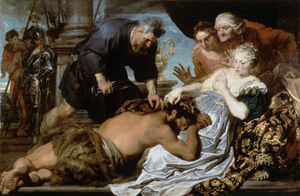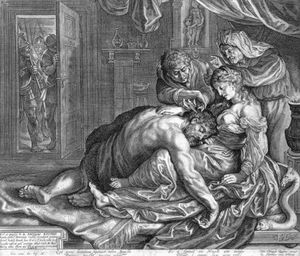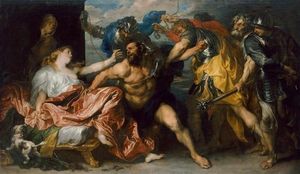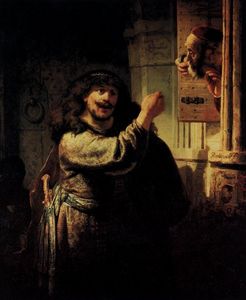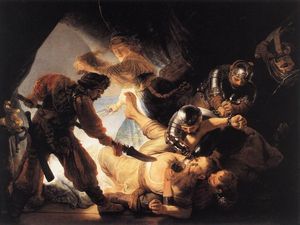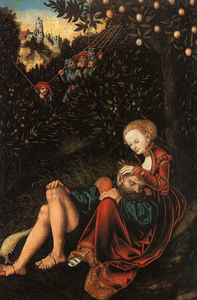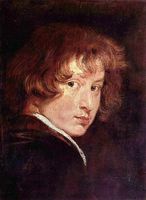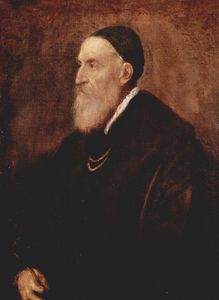Samson and Delilah
- Date of Creation:
- 1620
- Medium:
- Oil
- Support:
- Canvas
- Subject:
- Scenery
- Art Movement:
- Baroque
- Created by:
- Current Location:
- London, United Kingdom
- Displayed at:
- Dulwich Picture Gallery
- Owner:
- Dulwich Picture Gallery
- Samson and Delilah Page's Content
- Story / Theme
- Inspirations for the Work
- Analysis
- Related Paintings
- Artist
- Art Period
- Bibliography
Samson and Delilah Story / Theme
The story of Samson and Delilah derives from the Old Testament and the Nazarite Samson of God's Children from Israel. Samson's parents were married for many years and showed no promise of bearing any children, until one day an angel came to them and prophesized that they would bear a son who would protect the chosen people of God and would therefore possess great strength.
As a Nazarite, Samson was a servant of God and was not allowed to consume any grape products including alcohol or cut his hair as that was where his strength lied. He was also never to touch a dead body.
Unfortunately Samson had a weakness for beautiful women. Besides this he broke every rule of being a Nazarite by constantly indulging in alcohol abuse, touching the dead body of a lion and eating the honey out of it. Samson had serious emotional issues and could not control his temper. He was extremely vain and very much did as he pleased.
After a failed marriage, Samson met a beautiful Philistine woman named Delilah. He was so moved by her beauty and charms that he frequented her harlot's house where she was known to commit acts of a prostitute.
After hearing of Samson's fascination with Delilah, the Philistine rulers offered her a hundred coins each to find the secret to his strength and hand him over to them. Consumed by greed, Delilah agreed and started her interrogation. Every night, Samson would fall asleep in Delilah's lap and three times she asked him what the secret to his strength was. She would claim his love for her was not true because he did not trust her with this secret. Even though he teased her three times and woke to find himself bound by the false attempts he gave her, he really was in love with her.
Eventually, Samson shared his secret with Delilah and she called the Philistines and they captured him and cut seven locks of his hair. They then burned his eyes out with a hot poker and bound him. On the day of sacrifice to the Philistine God, Dagon, they planned to sacrifice Samson. However, his hair grew back and he pleaded with God to give him his strength back. God forgave Samson and with his strength, he split the supporting pillars of the huge temple, killing over 3000 Philistines inside.
Samson also died but his body was found outside the rubble and so his parents buried him in the family tomb. Delilah got her money and disappeared.
Van Dyck's version:
In this work Delilah is shown wearing the traditional make up of the Parisian prostitute of white chalk and bright rouged cheeks, found in the brothels during the 1600s. Van Dyck creates high drama as he paints the scared facial expression of the two chambermaids behind her.
Samson and Delilah Inspirations for the Work
Van Dyck was not a big fan of the Old Testament and only executed three works based on it; two versions of Samson and Delilah and a painting of Susanna and the Elders.
This first version of Samson and Delilah shows the influence of van Dyck's two greatest inspirations - Rubens and Titian. Van Dyck admired Rubens' strong figures and Titian inspired his use of warm colors.
It seems that van Dyck's arrangement is based on Rubens' version of this work. However, because van Dyck's composition is reversed, it is more likely that he was inspired by Jacob Matham's print.
Van Dyck's Samson and Delilah also draws on the Venetian tradition of painting women who commit acts of prostitution.
Samson and Delilah Analysis
Composition:
This painting takes on a sort of zig- zag composition in which the image is much deeper than the flat canvas it is painted on. The foremost subject is Samson and his cutter.
The largest aspect being Samson's feet, the eye then travels up to the hushing Delilah who is still on the slanted first plane. The eye is the directed to the peering chambermaids. The aghast chambermaid's prominently darkened hand moves the eye toward the bright golden jug.
From the jug, the viewer follows the Philistine's curved body to the marble pillar and then the armored soldier. From there the awaiting philistines who look upon the scene in anticipation become more obvious. The Philistines are also painted on a much smaller and with less detail to accentuate their distance.
To further emphasize the image's depth, van Dyck includes a rolling mountain to the far left as the setting sun stretches off into the background.
Color palette:
This work shows van Dyck's ability to define texture and create the correct color schemes that not only add depth but also texture and movement as realistically as possible. His use of color in this work is so great that the viewer can almost feel the luscious fabrics in this scene.
The color schemes are divided into two, as the entire left side of the canvas is immersed in darkness and shadow and Delilah is bathed in light.
Covered in darkness, by Samson's side there are many hardened objects and props and the only sensuous fabric is his fur pelt. To recreate the soft fur, van Dyck uses his signature brown in various over tones, darkening the sections where the fur is thickest to create a sense of movement.
This technique also defines the rich texture in comparison to the cold, hard marble floor on which he lies.
To the far left we see one of the Philistines in a knight's armor that is well-defined in stark shadows. Behind him the other Philistines wait with bated breath.
Dark brown and greys dominate the left side, creating a foreboding atmosphere full of anticipation and fear and reflective of Samson's fate.
In depicting the sky the artist paints heavy grey clouds with faint traces of blue together with the setting sun. He uses many gold ochres in this work, for example, for the water jug upon the pedestal and the rich embroidery of the blanket that Delilah lies on.
His flesh tones vary, as Samson is painted with soft browns and tints of red hues for his drunken face. Delilah is in pure white and van Dyck uses a bright white sheen, most likely a chalk, to accentuate her beauty.
The chambermaids and the Philistine cutting the hair have various reds to define their skin textures, showing a level of hardship upon these subjects. The reds show various physical stresses upon the bodies such as the hand about to cut the hair.
Samson and Delilah Related Paintings
Samson and Delilah Artist
From the age of just 14 years old, Anthony van Dyck showed promising talent in the portrayal of the human face. He was already able to create the human aspect of the sitter and at the same time enlighten their deepest character traits through correct lighting and atmosphere.
Van Dyck produced his first biblical work aged 18 while he studied under Rubens and most of his works in this genre were executed during his period in Italy as he created paintings for some important buildings in the city on behalf of the cardinals and even the Pope.
Such works were heavily influenced by Rubens, especially in terms of their composition and style. These works also contained dominant iconographical elements in the spatial dimension and with regards to their refined coloring.
Drawing inspiration from his Catholic upbringing and motivated by his desire to represent the holy figures in excellence, van Dyck brought a fresh approach to these works, painting them in utmost beauty.
It's likely that his religious works were also influenced by his time in Venice when he was studying at the Venetian school and exposed to the portrayal of important saints and subjects from the biblical narrative. This is evident in Samson and Delilah as the artist draws on the Venetian tradition of painting women who commit acts of prostitution.
Anthony van Dyck developed his own compositional techniques and was soon ranked alongside Titian in terms of style. He was particularly well-known for his fresh approach to various new color schemes.
Samson and Delilah Art Period
The Baroque style originated in Italy and its pioneers include great artists such as Michelangelo and Tintoretto. Baroque art focused on impersonal and generic works with an animated and energetic mood. The success of this art genre was promoted by the Roman Catholic Church and the aristocracy, the latter of which saw Baroque art as a means of demonstrating wealth and power.
Flemish Baroque painting developed out of the southern Netherlands between about 1585 and 1700. There were several key artists leading this movement including Peter Paul Rubens, Jacob Jordeans and Anthony van Dyck. Rubens trained van Dyck and many other artists and exerted greatest influence on the development of Flemish art. Van Dyck, on the other hand, played a vital role in establishing new directions in English portraiture.
Flemish Baroque painting centered on still-life, genre paintings of everyday scenes and landscape painting. Other developments in this genre were similar to those of Dutch Golden Age painting, in that artists specialized in areas such as history painting and portraiture, as was the case with Anthony van Dyck.
Samson and Delilah Bibliography
To read more about van Dyck and his paintings please refer to the recommended reading list below.
• Blake, Robin. Anthony Van Dyck: A Life, 1599-1641. Rowman & Littlefield Publishers, 2000
• Brown, Christopher. Anthony Van Dyck. izzoli International Publications, 1999
• Brown, Christopher. The Drawings of Anthony Van Dyck. Pierpont Morgan Library, 1991
• Cust, Lionel. Anthony Van Dyck, a Further Study. 2010
• Depauw, Carl. Anthony Van Dyck as a Printmaker. Rizzoli International Publications, 1999
• Gordenker, Emilie E. S. Anthony Van Dyck (1599-1641) : and the Representation of Dress in Seventeenth-century Portraiture (Pictura Nova 8). Brepols N. V., 2003
• Gritsai, Natalia. Great Masters: Anthony Van Dyck. Grange Books, 2004
• Marshall, Beatrice. Old Blackfriars: A Story of the Days of Anthony Van Dyck (1901). Kessinger Publishing, 2009
• Wheelock, Arthur K. Anthony Van Dyck. Harry N Abrams, 1991
• White, Christopher. Anthony Van Dyck: Thomas Howard, Earl of Arundel (Getty Museum Studies on Art). J. Paul Getty Museum, 1996

